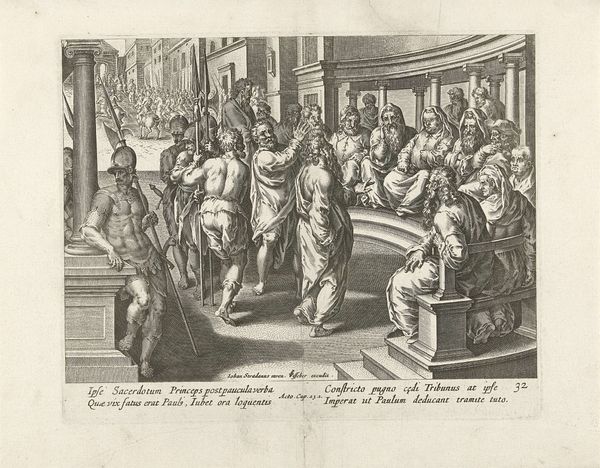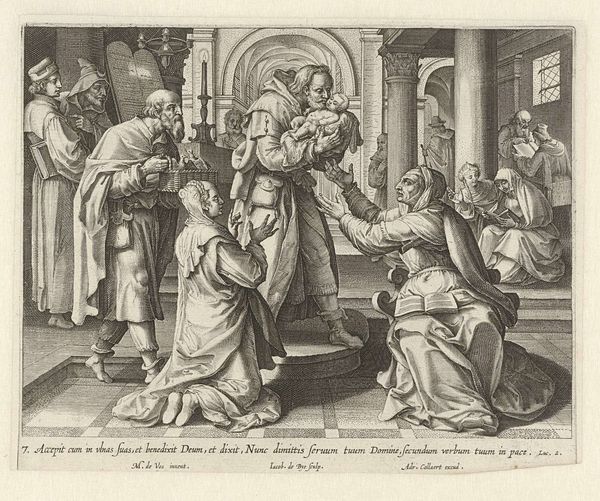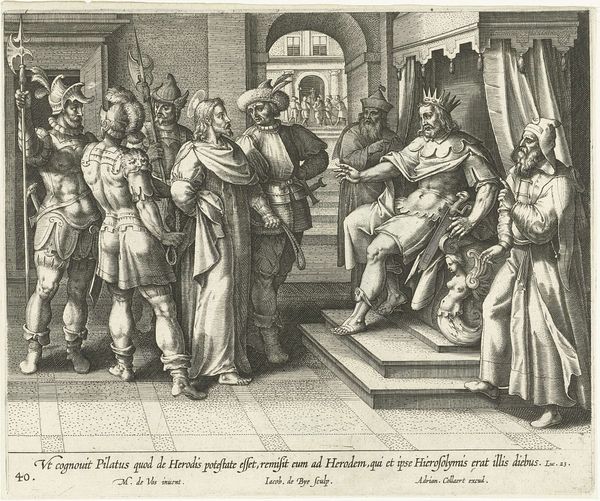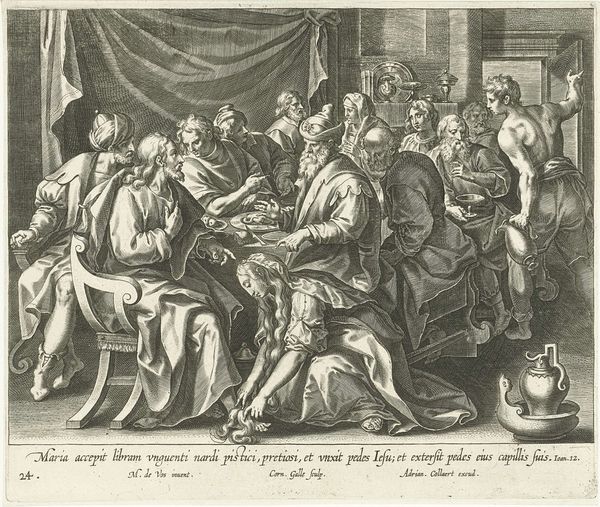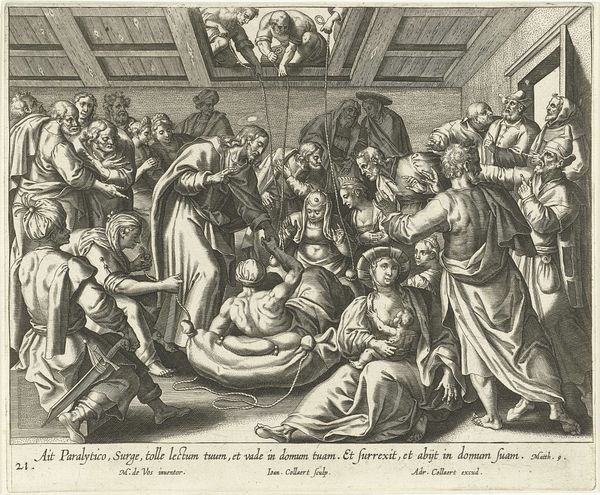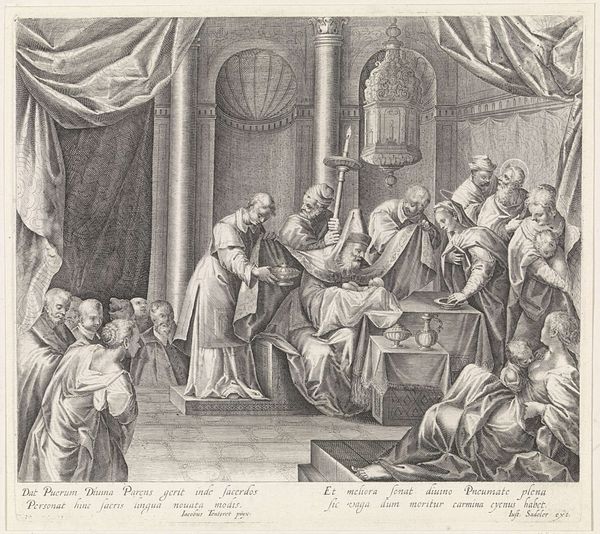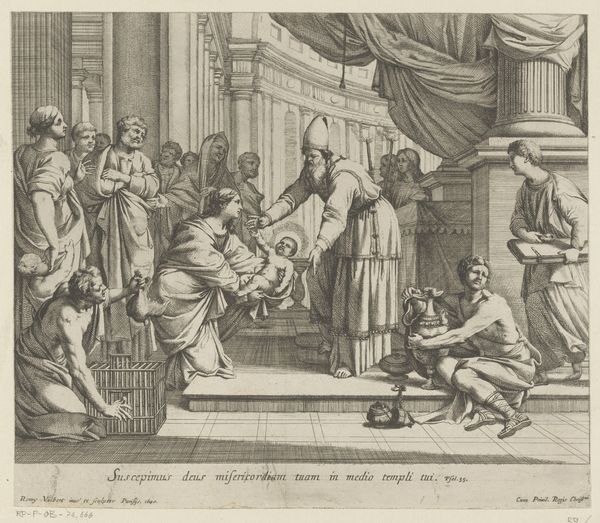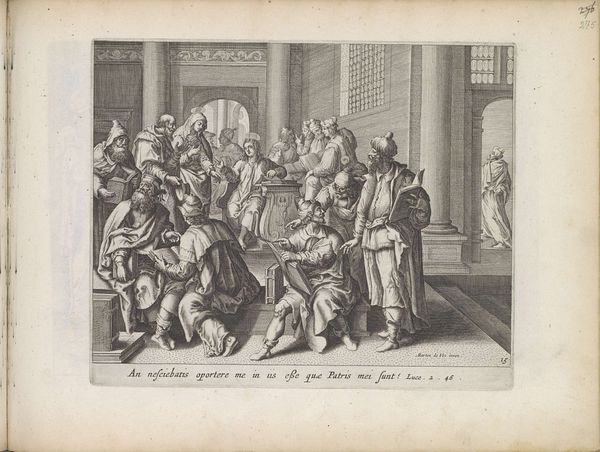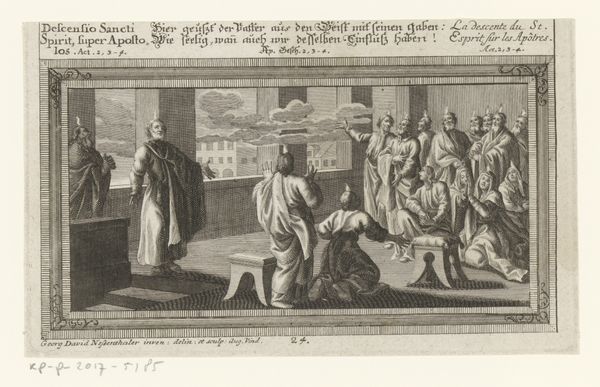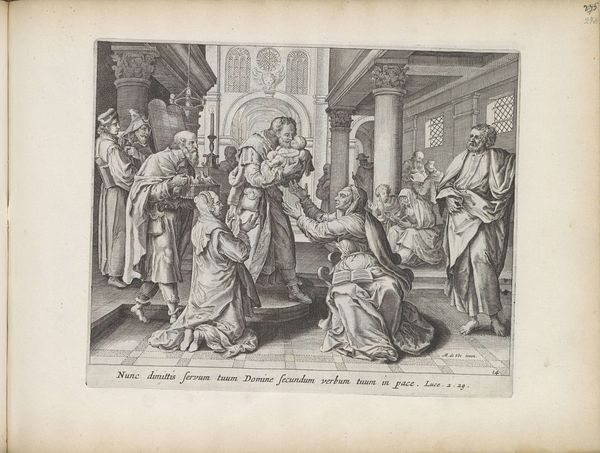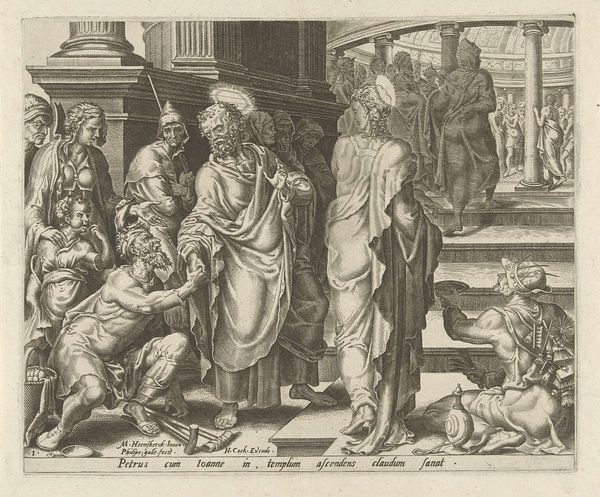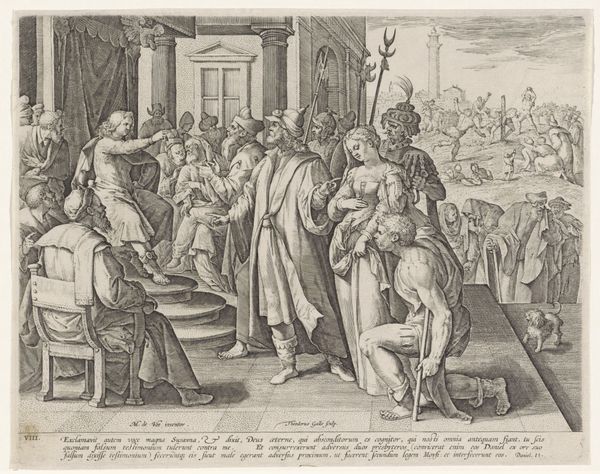
print, engraving
#
narrative-art
#
baroque
# print
#
old engraving style
#
history-painting
#
engraving
Dimensions: height 179 mm, width 220 mm
Copyright: Rijks Museum: Open Domain
Editor: This is "The Generosity of the Poor Widow," an engraving from sometime between 1598 and 1618 by Jacques de Bie. The detail achieved with the engraving technique is striking. So many figures, each with individual expressions! It feels like a scene captured from a play. What stands out to you in this piece? Curator: Immediately, I'm drawn to the interplay of gazes and gestures. Note how Christ directs attention to the widow. What meaning do you think de Bie intended to convey with this deliberate positioning and the inscription from Luke below? Editor: I guess to show how her small offering meant more than the large donations of the wealthy? Her act of giving is centered and highlighted? Curator: Exactly. But consider further. In this era, charity and piety were potent symbols. The widow, through her poverty and generosity, becomes a symbol of genuine faith contrasted against outward displays. How does this resonate with our understanding of wealth and piety today? Editor: Hmmm. I see the parallels! Is there significance to the architectural setting, a sort of bare stage versus the gathered crowd? Curator: Definitely. It emphasizes the public nature of both wealth display and quiet devotion. Look how the details of dress and the nuances of posture differentiate social status, echoing long-standing cultural anxieties around wealth, poverty, and piety. How do you think contemporary audiences may have viewed this? Editor: Perhaps as a reminder that true value lies in actions and intention, not appearance? This image makes me reconsider the common symbols of wealth we still use. Thanks, that’s fascinating. Curator: A worthy consideration, indeed! This piece holds a mirror to our values, and their roots run deeper than we often realize.
Comments
No comments
Be the first to comment and join the conversation on the ultimate creative platform.
